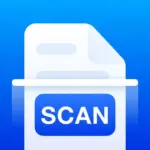GitHub IPA with iOS growth has marked a meaningful shift in how developers can create, share, and distribute applications. One of the standout elements is the GitHub IPA (iOS App Store Package) file, which not only empowers developers with enhanced capabilities but also streamlines the entire process of app development. In this article, we will explore the various aspects of GitHub IPA for iOS, from understanding its workflow to addressing potential challenges and future trends.

Unlocking Potential: The Power of GitHub IPA for iOS Advancement
The GitHub IPA concept is revolutionary for developers looking to elevate their iOS projects. It allows developers to collaborate more effectively through version control and easily share their apps through a unified platform. By leveraging GitHub’s extensive features, developers can harness **community support**, integrate with CI/CD tools, and manage deployments more efficiently.
Another major advantage of github IPA is its capacity for **scalability**. Developers can create repositories that serve as the foundation for complex applications,making it feasible to break down large codebases into manageable sections.This modular approach not only improves code maintainability but also enhances team collaboration, as different members can work on specific modules without conflict.
moreover, the power of GitHub’s extensive ecosystem means that developers can tap into a wealth of community resources. From libraries and frameworks to plugins and themes,the shared codebase on GitHub fosters creativity and innovation. This collaborative ethos is invaluable, particularly in a fast-evolving landscape such as iOS development.
From Code to App: Understanding the GitHub IPA Workflow
The workflow of creating an iOS app using GitHub IPA involves a series of systematic steps that ensure efficient development and deployment. The process begins with creating a repository on GitHub were developers can upload their source code. This initial step is vital for managing versions and keeping track of changes across the development lifecycle.
Once the code is in place, developers will typically employ Continuous Integration (CI) tools to automate testing and build processes. Integrating CI/CD pipelines allows greater assurance in the quality of the code,identifying bugs early in the development phase. This automated surroundings coupled with GitHub fosters a seamless transition from code to deployed app.
after rigorous testing and refining, the final compile generates an IPA file ready for distribution. This file can be shared internally through platforms like TestFlight or made available for public download. Each of these stages is documented in version control, allowing for easy rollbacks and facilitating collaboration among team members.
Seamless Integration: Using GitHub for iOS App Distribution
Distributing an iOS app has become increasingly straightforward with GitHub. The integration of GitHub as a hosting platform simplifies the sharing of IPA files with testers and end-users, ensuring that the distribution process is both efficient and reliable. By linking the repository with a CI/CD tool, updates and new versions can be rolled out swiftly.
GitHub’s built-in functionality allows developers to configure their repositories for easier access to binaries. This capability is significant for distribution,as it offers the ability to deliver app updates without requiring manual downloads or complex installations for users. The **release** section in GitHub repositories serves as a hub where users can find and download the latest IPA files.
Moreover, integrating features like issue tracking and pull requests offers developers valuable feedback during the distribution process. Users can submit bug reports or contribute enhancements, fostering a community-centric approach to app improvement. This interaction not only leads to better software quality but also engages users in the development journey.
How to Install GitHub IPA with Sideloadly
Sideloadly provides a simple and user-kind way to install GitHub IPA files directly onto iOS devices. First, ensure you have Sideloadly installed on your computer and have the IPA file ready. Follow these steps:
- Connect your iOS device to your computer.
- launch Sideloadly and select your device.
- Drag and drop the IPA file into Sideloadly.
- Click the “start” button to begin the installation process.
- Wait for the installation to complete,and then check on your device.
This method not only simplifies the installation process but also supports multiple configurations and customizations to suit user preferences.
How to Install GitHub IPA using Esign
Esign offers another choice for installing IPA files without a developer account.To use Esign for GitHub IPA installations, you will need to follow these steps:
- You will need to visit the Esign website on your iOS device.
- Upload the IPA file that you want to install.
- enter any required information such as your Apple ID.
- Initiate the signing process to generate a downloadable link.
- Once completed, click on the link to install the app directly.
This method is particularly beneficial for developers who want to distribute their apps without the App Store, making it accessible to specific users or testers.
GitHub MOD IPA For iOS iPhone, iPad
GitHub can also be used to create modified (MOD) versions of existing iOS applications, which can unlock additional features or enhance functionality. To create a MOD IPA:
- Fork the original repository from GitHub containing the app’s source code.
- Make the desired modifications according to your project requirements.
- Compile your changes into a new IPA file.
- Upload the new IPA back to GitHub or share it through other distribution methods.
- Utilize Sideloadly or Esign to install the MOD IPA on your device.
This flexibility opens various possibilities for developers, enabling them to customize apps to meet specific user needs or challenges effectively.
Future Trends: The Evolving Role of GitHub in iOS Development
As technology and software development continuously evolve, so does the role of GitHub in iOS development. One emerging trend is the increasing adoption of automation tools for testing and deployment. This shift allows developers to focus more on coding while reducing the overhead costs associated with manual testing and distribution.
The integration of AI and machine learning into GitHub tools is another trend to watch. These advancements could lead to smarter code recommendations, enhanced debugging, and even smarter CI/CD pipelines that adapt according to project needs, thus transforming the development workflow.
Furthermore, as the open-source community continues to grow, developers will likely see a rise in collaborative projects. GitHub’s platform fosters community-driven innovation, giving rise to shared resources and knowledge that can push the boundaries of what is possible within iOS applications. This collaboration will undoubtedly lead to richer and more versatile applications in the future.
Conclusion
Download GitHub IPA For iOS has become a powerful tool for iOS developers, drastically improving how applications can be created, managed, and distributed. By understanding the workflow, integrating best practices, and being aware of potential challenges, developers can maximize their productivity and engagement with their projects. as GitHub continues to evolve, the integration of new technologies and collaborative features promises an exciting future for iOS development.






Leave a Comment